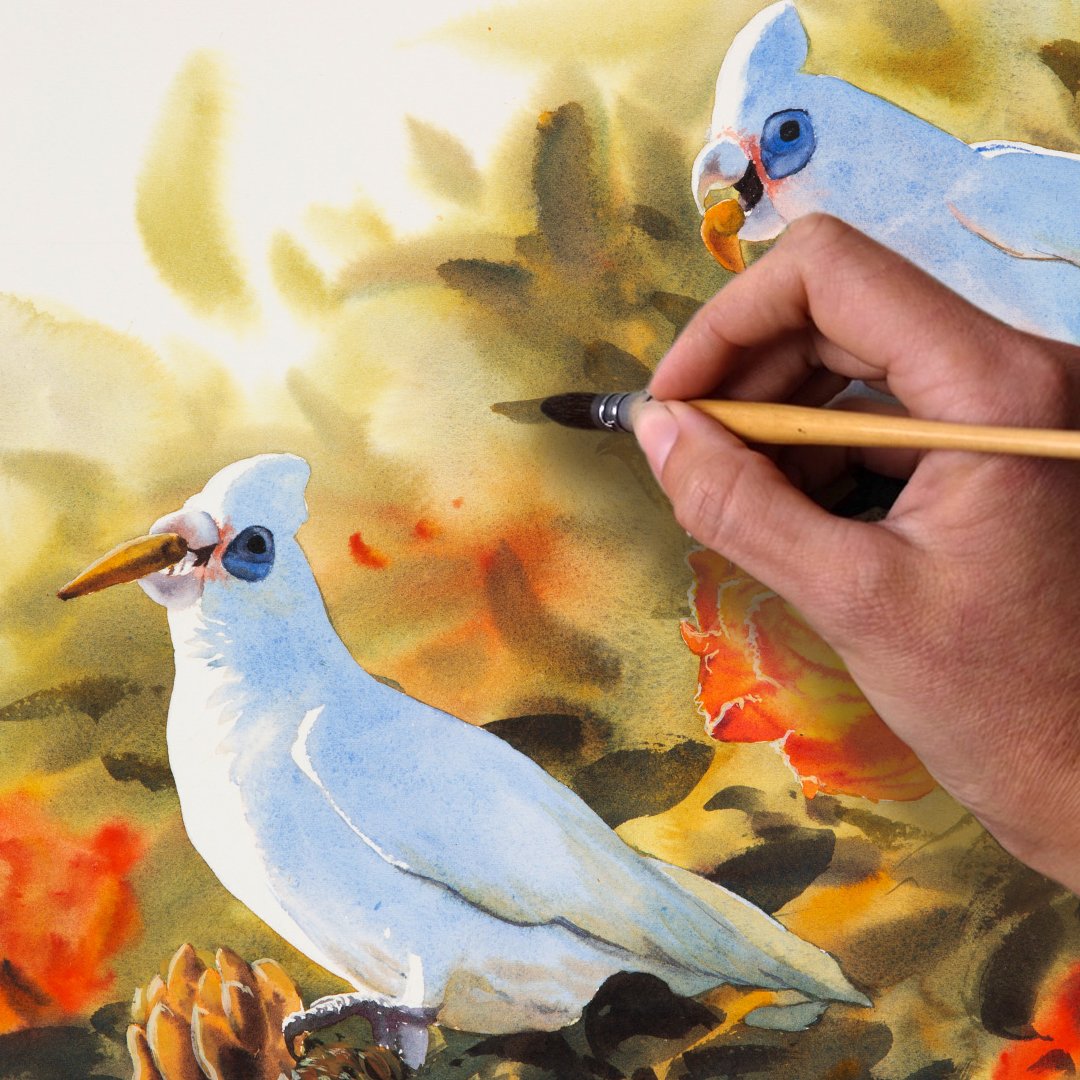can you watercolour on normal paper
Can you watercolour on normal paper? Well, yes and no! Let me explain:
Traditionally, watercolour paper is not standard paper
It’s not the paper you may have at home or laying in your printer tray. It’s special stuff. Watercolour paper is treated with a “sizing”, a starchy substance which helps make the paper absorb moisture evenly and allows pigment to settle into the fibres of the pulp (wood or cotton pulp).
The sizing may be animal (gelatine) or cellulose (plant) and can be applied 2 different ways:
Internal sizing is added to the paper pulp before the sheet is formed (which chemically bonds to the paper fibres)
External sizing can be applied by dipping the paper into a sizing solution (tub sizing) or sprayed on (surface sizing)
Because of this, watercolour paper and brands vary. The quality and application of the sizing will affect the way your paper works, making it easier or harder to work with.
You can see how the pigment here granulates and sits in the tooth (texture) of the special watercolour paper. This allows the watercolour to bleed and blend into the paper softly and create that nice, fuzzy and soft watercolour effect.
Normal paper can also be used with watercolour:
It just works a little differently. The watercolour paint will sit or pool on the surface of the paper longer and may form valleys (where the paper softens under the moisture and raises and sinks in areas). But this might be something you like! You might like to work experimentally, with the watercolour slipping around on the surface, dribbling and forming interesting shapes. One of my favourite watercolour artists does this really well:
Artist: Martha Zmpounou
The paper I recommend for my online painting classes:
For my art lessons online, I recommend watercolour paper (it’s good to learn the rules, or learn on the real stuff before you can go off and break the rules and push the limits). I recommend Arches or Rains paper with a medium tooth. I usually stick to 300gsm.
If you want to work larger or wetter or have more time to paint, I recommend using rough watercolour paper. If you like detailed, realistic illustration-style work or if you’d like your work to be scanned, I recommend using smooth watercolour paper (so the paper grain doesn’t show in the scanned image). Medium paper is somewhere in between and that’s what we use in my art courses online.
If you’d like to know which watercolour paper you should use for your style specifically, check out my in-depth article about watercolour paper.
Anne x

